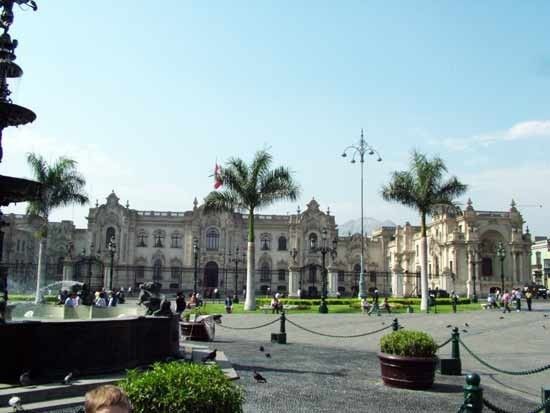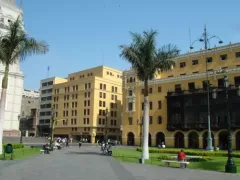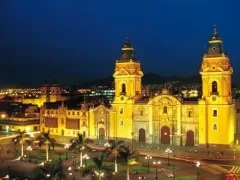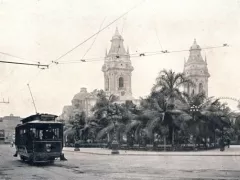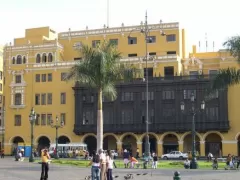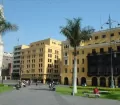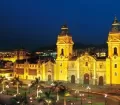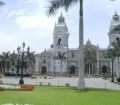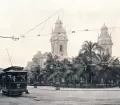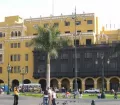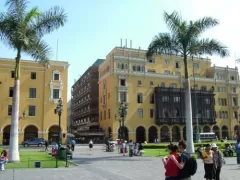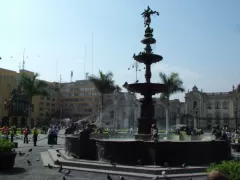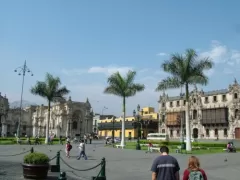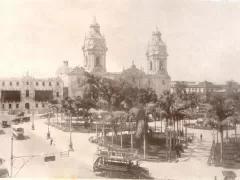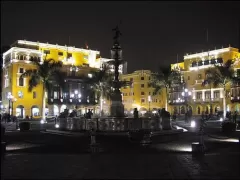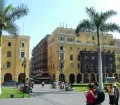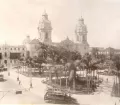The Plaza Mayor or Plaza de Armas (as it was known until 1990), is the oldest public place in Lima. In 1535 the conquistador Francisco Pizarro founded on the area of an existing indigenous settlement the city of Lima. He designed a main square in the central part of the future city Lima with all important institutions built around it.
On the north side of Plaza Mayor is the Palacio de Gobierno, the presidential residence and in colonial times the location of Francisco Pizarros house - later the Palace of the Viceroys. On the east side you find flanked by the Archbishops Palace the Cathedral of Lima. The Palacio Municipal is located on the west side of Plaza Mayor. Depending on their importance and rank wealthy and influential immigrants were allowed to build their mansions on properties near the Plaza Mayor. In colonial Lima the main square was the economic center of the city. The arcades in front of the main buildings, the small today called Pasaje Olaya and other adjoining streets were full of all sorts of shops. The plaza housed for a long time Limas big food market.
The Plaza Mayor was also the ceremonial center of old Lima. Here all important events took place: religious, state and military processions were held and all kinds of festivities and entertainment. The Spanish Inquisition used the Plaza Mayor for public executions of their condemned. Already in 1538 the first bullfight in Lima was held on Plaza Mayor and many others followed until the construction of the Plaza de Acho. In 1821 General Jose de San Martin declared here the independence of Peru. In it's over 500 year old history the Plaza Mayor has seen all important events of Lima and Peru. It was modified, remodelled and reconstructed many times, but its layout and significance still remains unchanged.


